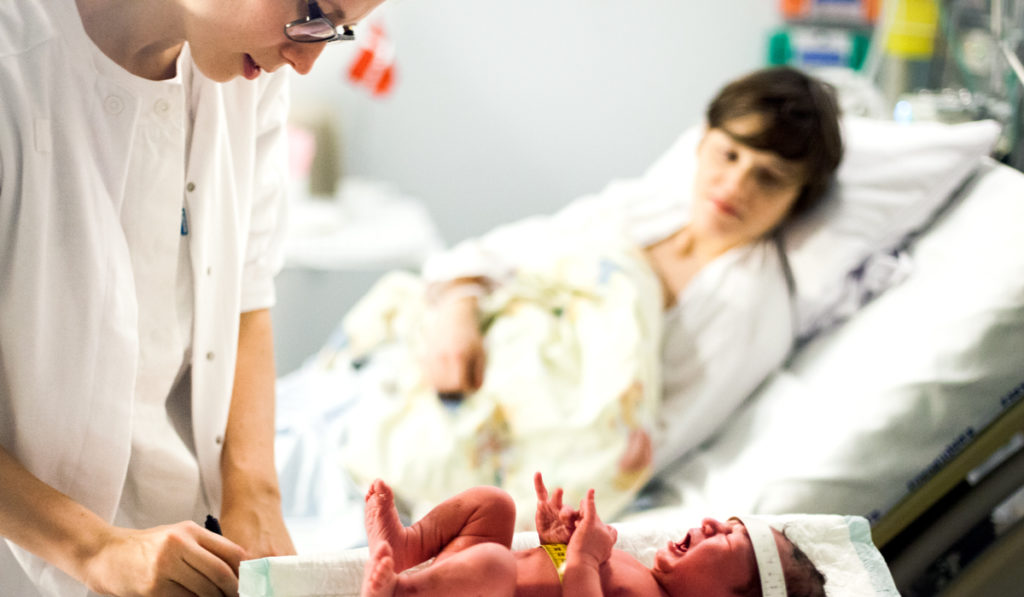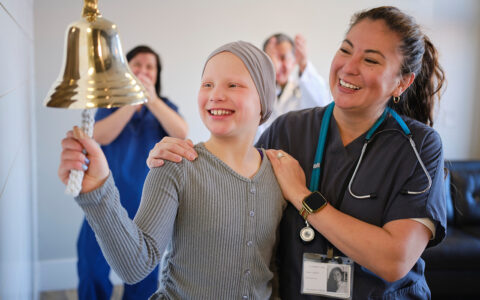While many women seeking low-intervention pregnancy rely solely on services provided by certified nurse-midwifes (CNM), those with risk factors for poor maternal or fetal outcomes may benefit from higher-level services from obstetricians and maternal-fetal medicine (MFM) specialists. However, involving multiple providers can fragment care and increase communication errors – a major cause of preventable maternal morbidity and mortality.
“If a woman seeking midwifery services is diagnosed with a high-risk condition, the best way to develop a plan of care is through a team approach that includes the woman and multiple health care providers,” said Julia Phillippi, Ph.D., director of the nurse-midwifery specialty at the Vanderbilt University School of Nursing. “In complex health systems like Vanderbilt, these plan-of-care determinations may involve visits to specialists in several different locations. The patient may feel there is a lack of communication and disengage from the system altogether.”
A New Clinic Model
Phillippi and colleagues at Vanderbilt wanted to change that paradigm. To improve communication among patients in the nurse-midwifery service and multiple providers, they consulted stakeholders about preferences for a new model of collaborative perinatal consultation. The results suggested an interprofessional collaborative clinic model where women in the midwifery service can meet simultaneously with an MFM specialist and a CNM from their original practice of choice.
“Some women had been leaving midwifery care and having their babies at home or with providers who weren’t trained in high-risk care,” Phillippi said. “With this collaborative model, we’re helping to broker a transition if a woman needs to use physician services.”
A Checklist for Comprehensive Care
The interprofessional care model led to a positive outgrowth: a planning checklist that prompts providers to engage with women about a comprehensive plan for maternity care. In feasibility testing involving 50 collaborative visits, the planning checklist provided a clear prompt to health care providers to address all aspects of maternity care and to elucidate the reasons for interventions to women. Fifteen semi-structured follow-up interviews were used to evaluate the model.
“It really improved our patients’ ability to flow through the system and to feel like their medical team was communicating.”
“The checklist really improved our patients’ ability to flow through the system and to feel like their medical team was communicating. And through the collaborative model, everyone was able to get out of their practice silos,” Phillippi said.
Testing the Model
The planning checklist is currently integrated into a randomized trial, funded by the Agency for Healthcare Research and Quality, assessing women’s and health care providers’ satisfaction with the full collaborative consultation model as well as the effect of the model on team communication. The trial is expected to be completed in six months.
One goal was to increase participation in the study of racially and geographically diverse expectant women. To facilitate access to the trial, the investigators developed a comprehensive informed consent approach merging telephone discussion with electronic documentation of informed consent. The e-consent approach also met the team’s need to facilitate rapid consent when participants became eligible, Phillippi said.
“Including women from diverse backgrounds is essential to improving the evidence base for maternity care. It’s important to us as providers and important for health policy.”





